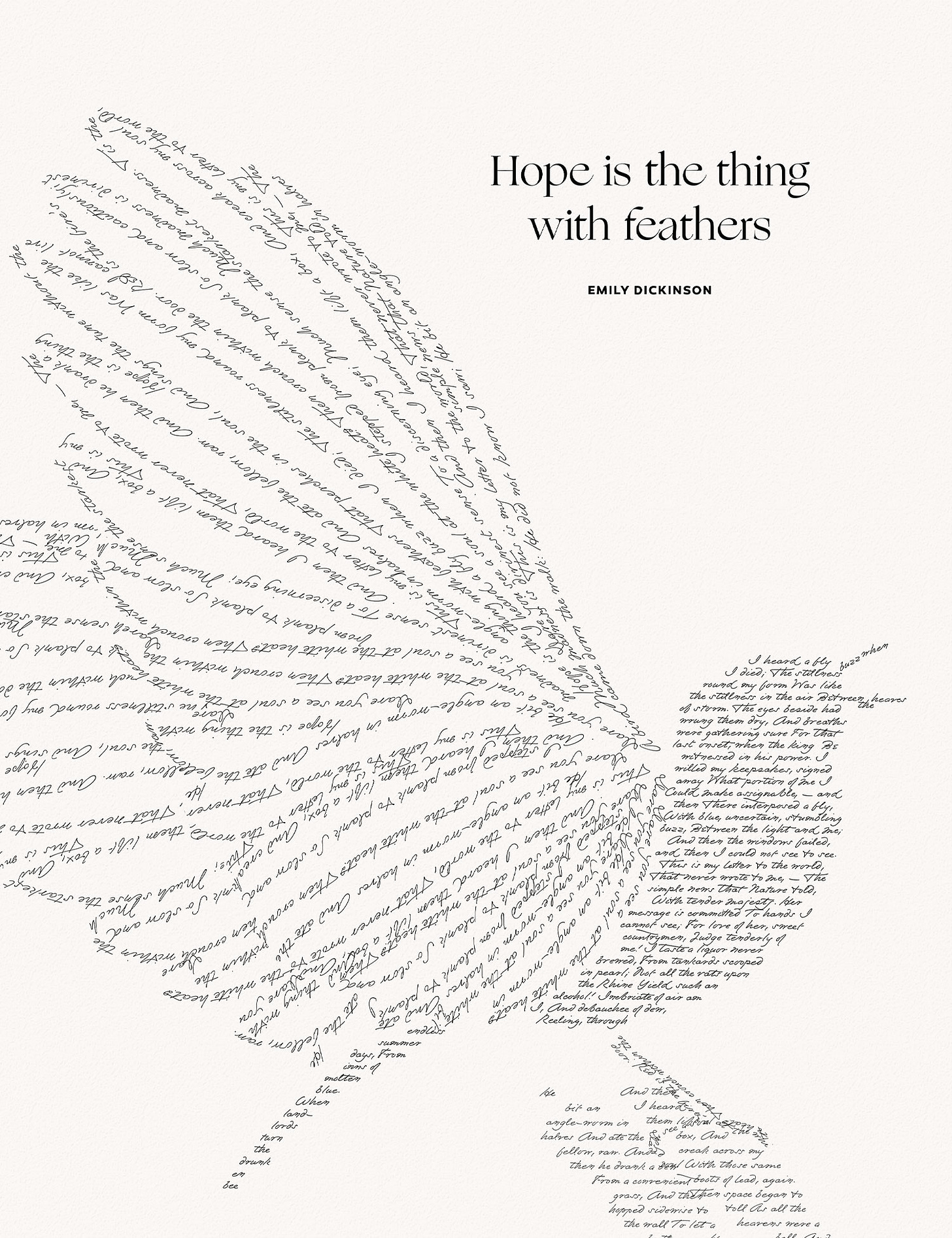
Emily Dickinson Brings Abstract Ideas to Life Like Nobody's Business
"Hope is the thing with feathers" - Emily Dickinson
Leave it to Emily Dickinson to find that perfect metaphor. Even when you think she’s doing something so simple, there are hidden depths to plumb. Developing the concept of hope into a bird that sings under the worst of circumstances, she leaves us with the unsettling observation, that hope, now so vividly portrayed, has never asked anything in return of her. The internal feeling is externalized through metaphor, examined by us, and then in turn examines us back. And so, hope has within it even deeper virtues: generosity, courage, compassion, love.
The hope Dickinson depicts is also a well of creative inspiration and strength, which for her manifested in poetry. For this reason, I thought it appropriate to use her handwriting and lines of verse as the lines of the illustration. Visually, her handwriting combines flourishes and swooshes with an almost frantic energy - a pen racing to keep up with a quicksilver mind.
Hope is the thing with feathers
That perches in the soul,
And sings the tune without the words,
And never stops at all,
And sweetest in the gale is heard;
And sore must be the storm
That could abash the little bird
That kept so many warm.
I've heard it in the chillest land,
And on the strangest sea;
Yet, never, in extremity,
It asked a crumb of me.
This drawing is from my illustrated book Hope is the Thing: A Collection of Poems by Emily Dickinson.
About the Art
“For this illustration, I used Emily Dickinson's own words as line elements to create ‘the thing with feathers.’ Because hope is characterized as having an unquenchable desire to sing, it made intuitive sense to use Dickinson’s own poetry as the embodiment of it.”
Art by Evan Robertson. All rights reserved.


